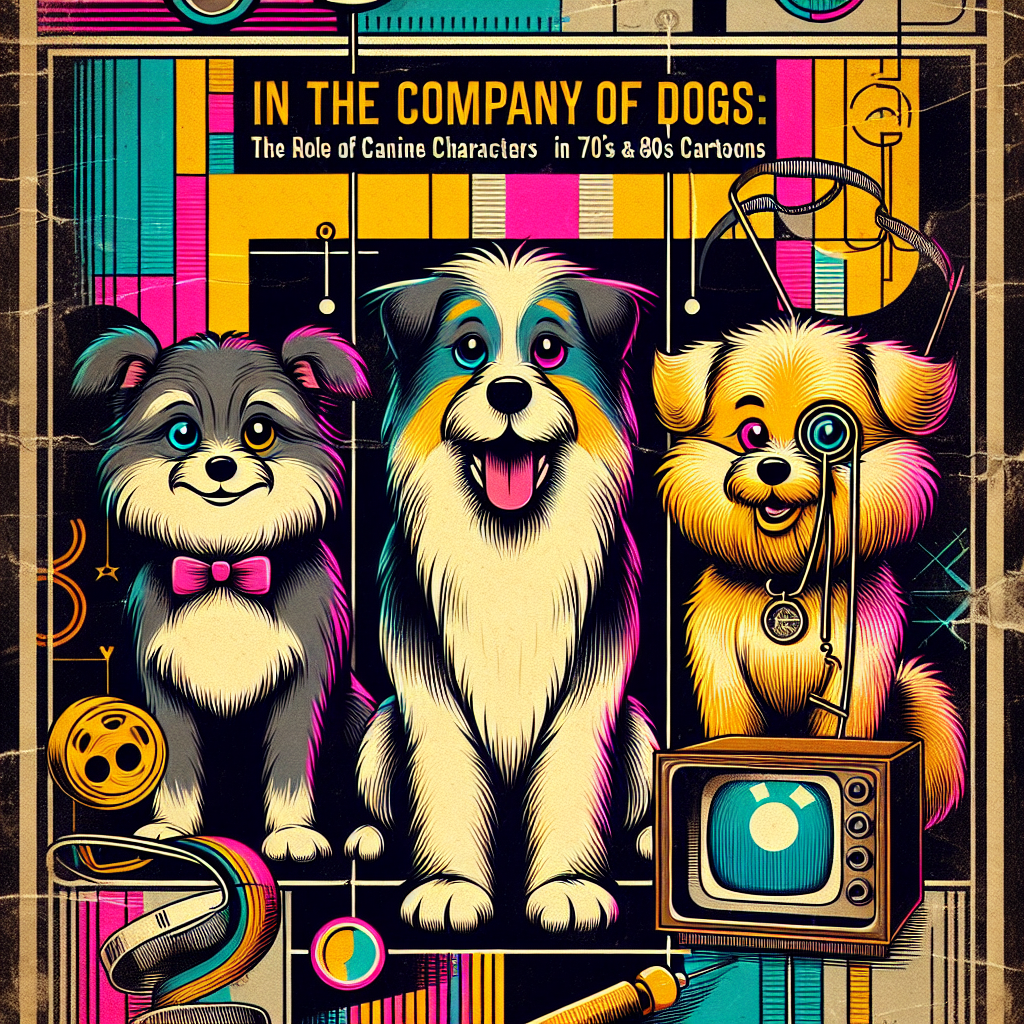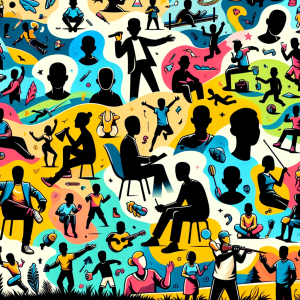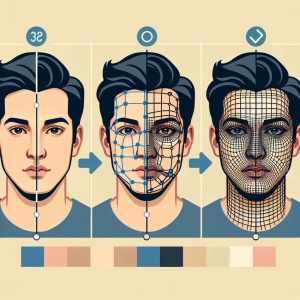Dog lovers, rejoice! The charming canines of our youth are more than just cute and cuddly characters; they played pivotal roles in some of our favorite cartoons from the 70s and 80s. In this nostalgic journey, we’ll explore how these furry companions not only provided comic relief but also conveyed important life lessons, all while delighting young viewers around the world. So grab a snack, settle in, and let’s take a tail-wagging trip down memory lane!
The Golden Era of Animation: Dogs at the Forefront
The 1970s and 1980s were a transformative time for animation. Television networks were booming, and so was the production of cartoons. With a growing audience craving entertaining stories, animators realized the potential of canine characters. These pets became icons, often embodying the virtues we hold dear: loyalty, bravery, and friendship.
Iconic Canine Characters That Shaped Our Childhood
Scooby-Doo: The Mystery-solving Great Dane
It would be impossible to discuss canine characters without mentioning Scooby-Doo. Debuting in 1969, this Great Dane was the affectionate, snack-loving sidekick of a group of teenagers (Fred, Daphne, Velma, Shaggy, and of course, Scooby). Much of the show’s charm came from Scooby’s clumsiness and penchant for getting into (and out of) trouble.
- Iconic Traits: Scooby’s goofy nature and his catchphrase "Ruh-roh!" became cultural staples. He taught us the value of teamwork, even when faced with spooky mysteries.
- Cultural Impact: Scooby-Doo not only inspired countless spin-offs and movies but also became a symbol of friendship and fun. His ability to solve mysteries was almost secondary to the heartwarming friendships depicted in the series.
Snoopy: Peanuts’ Lovable Dreamer
Charles Schulz’s classic comic strip "Peanuts" made its animated adaptation in the 70s, featuring none other than Snoopy, Charlie Brown’s imaginative beagle. Snoopy’s whimsical nature and unique persona became a safe haven for viewers seeking comfort.
- Imagination Unleashed: From a World War I flying ace to a famous author, Snoopy took on various roles and adventures that highlighted the importance of imagination.
- Life Lessons: Snoopy taught us about persistence and positivity in the face of life’s trials—a valuable lesson for children and adults alike.
Astro: The Jetsons’ Futuristic Pup
In the futuristic world of "The Jetsons," we met Astro, the friendly, exuberant dog who was as much a part of the family as any human character. With robotic gadgets galore, Astro provided a hilarious contrast to the show’s high-tech themes.
- Humor in Technology: Astro often got into comedic predicaments due to his inability to communicate in the sophisticated world around him. He offered a charming reminder that love and loyalty can shine through even the quirkiest settings.
- Symbol of Family: Astro represented the typical family dog, providing warmth and affection amidst the chaos of the future.
Snagglepuss: The Theatrical Pink Panther
Hanna-Barbera’s Snagglepuss, a pink feline dog known for his theatrical flair, was another standout character of this era. Although not a traditional dog (more like an anthropomorphized pink panther), Snagglepuss always captured our hearts with his catchphrases like “Heavens to Murgatroyd!”
- Cultural Commentary: Snagglepuss’s quirky personality was excellent for societal commentary, addressing themes of identity and performance.
- A Unique Contribution: His character provided a colorful take on the concept of the “class clown,” reminding audiences that being different is not just okay—it’s fantastic!
The Psychology Behind Our Love for Cartoon Dogs
Cartoon dogs aren’t just entertaining; they provide psychological benefits to viewers. They often reflect our innate desires for companionship and loyalty. Here’s how they touch our hearts:
Canine Companionship
Dogs have long been known as “man’s best friend,” and their portrayals in cartoons emphasize this. Canine characters have an exceptional way of connecting with viewers, embodying values such as loyalty, trust, and friendship. They portray a kind of unconditional love that resonates deeply, offering comfort and familiarity.
Humor and Relief
Dogs are often portrayed in humorous contexts in cartoons. They bring lightness to sometimes heavy themes, acting as comedic relief. Think of how many times Scooby and Shaggy have find themselves in ridiculous predicaments. Through their antics, audiences can laugh and forget their cares for a while.
Life Lessons Through Everyday Adventures
These canine characters often find themselves in relatable situations, teaching moral lessons about bravery, loyalty, and friendship. Young viewers learn valuable lessons through the experiences and adventures of their beloved pets, making them vital narrators in their respective cartoons.
The Evolution of Cartoon Dogs
From Sidekicks to Leads
While early cartoons often relegated dogs to sidekick roles, the 70s and 80s saw a shift. Shows like “The Incredible Hulk” featured dogs as lead characters, bringing complexity and depth to their personalities. Canine protagonists began to drive their own narratives, showcasing their unique traits and appeal.
The Rise of Anthropomorphism
Canine characters started exhibiting human traits in the 70s and 80s. They spoke, wore clothes, and acted with emotions similar to humans. This anthropomorphism made them relatable and added layers to their characterization. Dogs, just like us, face struggles, dreams, and joys. This connection allowed kids to develop empathy—an invaluable lesson.
Diversifying Canine Characters
As societies around the globe began to embrace diversity, so did cartoon canines. With characters of various breeds, behaviors, and backgrounds, shows began adding more narratives and personalities, showcasing dogs in all their lovable quirks.
The Legacy of Cartoon Dogs
Unforgettable quotables and moments
The lasting impact of these characters can be seen in the phrases and sayings we still reference today. Lines like Scooby-Doo’s “Scooby Snacks!” have become part of pop culture, symbolizing the nostalgia attached to these furry friends.
Spin-Offs and More
The 70s and 80s were not the final stop for these characters. They spawned numerous spin-offs, merchandise, and more. Scooby-Doo franchises have expanded to include movies and shows across multiple generations—delivering a timeless charm.
Impact on Future Animations
The canines of yesteryears laid the groundwork for future animated dog characters. Shows like “Paw Patrol” and “Adventure Time” borrow from the legacy of these iconic characters, further weaving the fabric of canine companions into children’s visual storytelling.
Cartoon Dogs and Modern Media
As we look to the future, it’s essential to acknowledge that the canine characters from the 70s and 80s continue to influence media today. With the resurgence of nostalgic shows, classic characters are enjoying a revival.
Bringing Back the Classics
Revival series are bringing back beloved canine characters to a new generation. The charm of Scooby-Doo is still evident, and audiences continue to embrace the themes of companionship, humor, and adventure through these enduring tales.
The Role of Technology and Animation
Modern animation technology has allowed for an explosion of creativity in character design and storytelling. While the spirit of the canine characters is retained, we are entering an era where their adventures can be even more visually spectacular.
Closing Thoughts: Why We Still Love Our Cartoon Pooches
As we reminisce about cartoons from the 70s and 80s, it’s clear that the canine characters were not just fluffy comic relief; they were key players in shaping how adventure, camaraderie, and humor were communicated to children. The roots they planted in narrative and character development still resonate today, teaching us to cherish loyalty, embrace joy, and find fun in friendship.
So, the next time you find yourself chuckling at a cartoon dog’s antics, remember that these beloved furry figures have shaped not only our childhoods but the landscape of animated storytelling itself. Here’s to our cartoon pups—forever in our hearts!
Frequently Asked Questions (FAQ)
What is the significance of dogs in cartoons?
Dogs in cartoons often symbolize loyalty, bravery, and friendship. They provide humor, comforting companionship, and can convey important life lessons to viewers.
Which cartoon dogs have had the most significant cultural impact?
Scooby-Doo is perhaps the most iconic, beloved for his investigative skills and goofy charm. Others, like Snoopy and Astro, have also made lasting impressions through their unique personalities and stories.
How do cartoon dogs contribute to children’s emotional development?
Cartoon dogs often embody characteristics such as empathy, curiosity, and loyalty, helping children understand and navigate their feelings. They teach important moral lessons that children can relate to in their lives.
Have cartoon dogs changed in modern animation?
Yes! While the foundational traits of companionship and humor remain, modern cartoon dogs are often more visually sophisticated and diverse in personality, reflecting contemporary society and embracing new storytelling techniques.
Why do we continue to enjoy cartoons featuring dogs?
The humor, nostalgia, and heartwarming qualities of these characters resonate with audiences of all ages. Dogs in cartoons represent the universal themes of love, friendship, and adventure, making them timeless figures.








+ There are no comments
Add yours